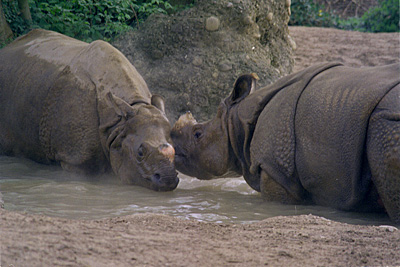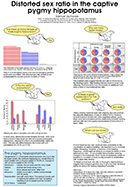Genetical effects in small populations
Samuel Zschokke ![]() , Bruno Baur, Sylvain Ursenbacher
, Bruno Baur, Sylvain Ursenbacher
Population genetics contributes important knowledge to the preservation of species. In endangered species, genetical management of captive populations and of natural populations in isolated habitats is necessary for the short term survival of the species (avoidance of inbreeding) and for the long term maintenance of the adaptability of the species (preservation of genetic diversity). In collaboration with Basel Zoo, we study population genetical aspects of the world wide captive breeding populations of the pygmy hippopotamus, the Indian rhinoceros (picture) and other mammal species, to form the basis for the breeding programs.
Keywords: captive breeding - inbreeding - outbreeding - genetic diversity - conservation management
Selected publications
Zschokke S, Armbruster GFJ, Ursenbacher S & Baur B (2011) — Genetic differences between the two remaining wild populations of the endangered Indian rhinoceros (Rhinoceros unicornis) — Biological Conservation 144: 2702–2709
Krummenacher TS & Zschokke S (2007) — Inbreeding and outbreeding in African rhinoceros species — Pachyderm 42: 108–115
Zschokke S, Gautschi B & Baur B (2003) — Polymorphic microsatellite loci in the endangered Indian rhinoceros, Rhinoceros unicornis — Molecular Ecology Notes 3: 233–235
Zschokke S (2002) — Distorted sex ratio at birth in the captive pygmy hippopotamus, Hexaprotodon liberiensis — Journal of Mammalogy 83: 674–681
Zschokke S & Baur B (2002) — Inbreeding, outbreeding, infant growth, and size dimorphism in captive Indian rhinoceros (Rhinoceros unicornis) — Canadian Journal of Zoology 80: 2014–2023
List of all publications related to this project
Poster
![]()

![]()
